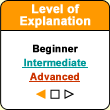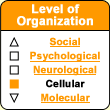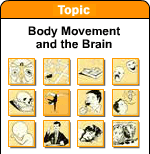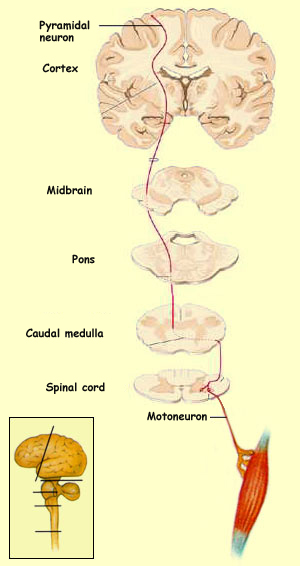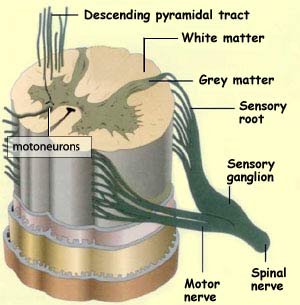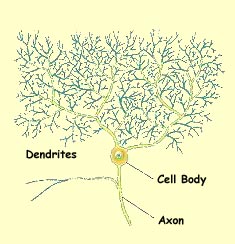The
cellular structure of the cerebellum (meaning "little
brain") is similar to that of the telencephalon in
the cerebrum. The grey matter (containing
the cell bodies of the neurons) is found at two locations.
One is at the surface of the cerebellum, in a thin
layer called the cerebellar cortex (the
cerebellum's "bark", so to speak). The
other is deep inside the cerebellum, where neurons
are grouped in clusters called cerebellar
nuclei.
The cerebellar cortex contains many furrows, running
mainly in a transverse direction. The deepest furrows
divide the cerebellum into lobules. The shallower furrows
within each lobule divide it into lamellae.
The main cells of the cerebellar cortex are large,
pear-shaped cells called Purkinje cells,
after the Czech anatomist who first described them,
in 1837. These cells receive impulses from their
synapses with the afferent nerve fibres entering
the cerebellum, then send these impulses out along
their axons to the cerebellar nuclei. The Purkinje
cells form a layer parallel to the surface of the
cerebellar cortex. There are also two
other layers of neurons on either side of the
Purkinje cells.
As in the cerebral cortex, the white matter that
forms the interior of the cerebellum consists of
the myelinated nerve
fibres that come and go between the cerebellar cortex
, the nuclei deep inside the cerebellum, and the
other brain structures outside it. |

